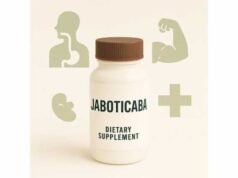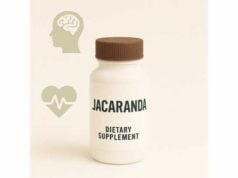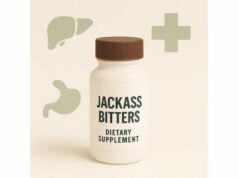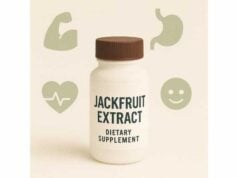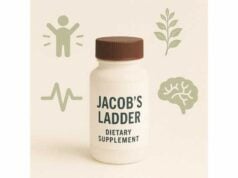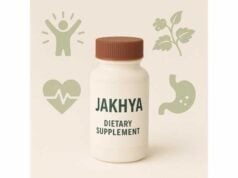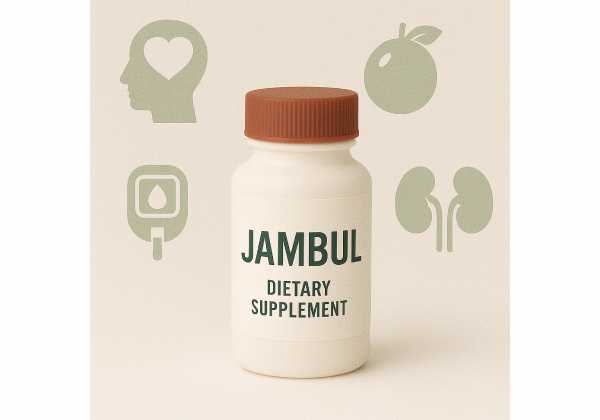
Jambul—also called jamun, java plum, or Syzygium cumini—is a deep-purple fruit from the Myrtaceae family with a long history in South and Southeast Asian food and medicine. Beyond the tangy fruit, traditional practices also use its seeds, leaves, and bark. Modern research explores jambul for metabolic health (especially blood sugar and cholesterol), antioxidant and anti-inflammatory actions, and gut-friendly polyphenols such as anthocyanins, ellagitannins, and quercetin glycosides. This guide translates that science into clear, practical advice: how much to take, how to use different forms (fruit, tea, seed powder, standardized extracts), what benefits to expect and when, and who should avoid it. You will also find a concise safety section and an evidence snapshot to help you evaluate products and design a sensible self-trial with your clinician’s input.
Key Insights
- May modestly improve fasting glucose, post-meal glucose, and total cholesterol over 8–12 weeks in some adults.
- Typical supplemental ranges: 250–500 mg standardized extract 1–3 times daily; or 1–3 g seed powder per day; tea from 1–2 g dried leaf per 250 mL.
- Can cause gastrointestinal upset or low blood sugar, especially with insulin or sulfonylureas.
- Avoid during pregnancy and breastfeeding, and do not use in children or before surgery without clinician guidance.
Table of Contents
- What is jambul and how does it work?
- Does it help blood sugar and cholesterol?
- How to use jambul fruit, tea, and supplements
- How much jambul to take per day
- Side effects, interactions, and who should avoid it
- Evidence snapshot and a smart product checklist
What is jambul and how does it work?
Jambul (Syzygium cumini) is an evergreen tree native to the Indian subcontinent that now grows widely across tropical regions. The fresh fruit tastes sweet-tart and slightly astringent, staining tongues purple thanks to its abundant anthocyanins. Traditional systems use not only the fruit but also the seeds (most common in supplements), leaves (often prepared as tea), and occasionally bark (historically as an astringent).
Key constituents and why they matter
- Anthocyanins (delphinidin and cyanidin derivatives) in the dark purple pulp give jambul its color. These pigments act as antioxidants and contribute to the fruit’s astringency and potential vascular effects.
- Ellagitannins and ellagic acid—polyphenols linked to both antioxidant and antimicrobial properties. In the gut, ellagitannins can be metabolized into urolithins, which may influence inflammation and mitochondrial health in a subset of people who harbor the right microbes.
- Flavonoids such as quercetin and myricetin glycosides are present in leaves and seeds and may support blood sugar control by modulating carbohydrate digestion, glucose transporters, and insulin signaling.
- Seed alkaloids and terpenoids have been investigated for effects on glucose metabolism and lipid handling in lab and animal models.
Proposed mechanisms (plainly explained)
- Post-meal glucose dampening. Seed and leaf preparations can slow carbohydrate breakdown in the gut and may reduce glucose absorption, leading to smaller post-meal spikes.
- Insulin signaling support. Extracts have shown the ability to affect proteins involved in insulin sensitivity and glucose uptake in preclinical studies.
- Lipid modulation. Some studies suggest modest reductions in total cholesterol, possibly via improved insulin sensitivity, antioxidant effects on lipoproteins, and changes in lipid metabolism enzymes.
- Antioxidant and anti-inflammatory tone. Polyphenols can neutralize reactive oxygen species and influence signaling pathways linked to inflammation, which is relevant to cardiometabolic health.
Parts and preparations differ
- Fruit (fresh, juice, or freeze-dried) supplies anthocyanins and vitamin C with low calories (and a lower glycemic impact than many fruits).
- Seed powder or standardized seed extract is the most common supplemental form for metabolic goals.
- Leaf tea is widely used in home remedies; strength varies with plant material and brewing time.
- Multi-herb formulas sometimes combine jambul with bitter plants or spices; these can be harder to interpret for dose and effects.
Because the plant part, extraction method, and standardization vary widely, two “jambul” products can act very differently. For personal use, consistency is crucial: choose one form and stick with it long enough to observe a measurable effect.
Does it help blood sugar and cholesterol?
The quick view: Evidence from human trials is mixed but encouraging in specific contexts. Some randomized studies show small to moderate improvements in fasting glucose and post-meal readings after several weeks, with occasional reductions in A1C and total cholesterol. Other trials show little change compared with placebo or standard therapy. Differences in results often trace back to the seed vs. leaf vs. fruit, dose, study duration, and baseline therapy participants were already using.
What the data trends suggest
- Fasting glucose: In adults with type 2 diabetes or prediabetes, standardized seed extracts or seed powders have sometimes lowered fasting glucose over 8–12 weeks. The magnitude tends to be modest and product-specific.
- Post-meal glucose: Leaf teas and seed extracts appear to blunt post-prandial spikes in some studies, likely via delayed carbohydrate digestion and effects on glucose transporters.
- A1C: When A1C shifts, the average reduction is small (fractions of a percentage point) and not universal. Trials often run too briefly to capture larger A1C changes.
- Lipids: Some studies note decreases in total cholesterol and improvements in triglycerides over a few months; effects on LDL and HDL are less consistent.
- Weight and blood pressure: Most short trials show minimal impact on weight or blood pressure.
Why results vary
- Preparation differences: A cup of homemade leaf tea is not equivalent to a capsule standardized to a seed marker; neither equals a serving of whole fruit.
- Dose and timing: Under-dosing or inconsistent intake blunts effects.
- Baseline therapy: People on insulin or sulfonylureas may see more glucose change—but they also face a higher risk of hypoglycemia if monitoring and medication adjustments are not in place.
- Study quality: Many trials are small and short, with variable blinding and outcome tracking.
How to set expectations
- If you have prediabetes or diet-controlled type 2 diabetes, an 8–12-week, well-logged trial with a consistent product may reveal a personal benefit.
- If you already take glucose-lowering medications, jambul should be considered an adjunct at most; collaborate with your clinician to step up monitoring and adjust treatment if needed.
- For lipid goals, any improvements are typically secondary and gradual; retesting after 8–12 weeks is reasonable.
The practical takeaway: jambul can help some people nudge glucose patterns in the right direction, especially around meals, but it is not a stand-alone treatment for diabetes or dyslipidemia. You’ll get the most out of it by pairing a consistent product and dose with structured monitoring and everyday foundations like fiber-rich meals, regular movement, sleep, and stress care.
How to use jambul fruit, tea, and supplements
Choose your primary form—fruit, tea, seed powder, or standardized extract—and keep everything else stable while you evaluate.
1) Fresh fruit (table use)
- What it offers: Anthocyanins, vitamin C, potassium, and fiber with a relatively low glycemic impact.
- How to eat it: Enjoy 50–100 g of fruit with meals several times per week during the season, or use freeze-dried powder in smoothies or yogurt.
- Tip: Pair fruit with protein or fat (e.g., yogurt, nuts) to steady post-meal glucose.
2) Leaf tea (home preparation)
- Basic method: Add 1–2 g dried jambul leaf (about 1–2 teaspoons, loosely packed) to 250 mL (1 cup) of hot water. Simmer gently for 5–10 minutes, cover, then steep another 5 minutes. Strain and sip warm.
- How often: Start with 1 cup daily for 3–4 days. If tolerated and helpful, increase to 1–3 cups per day, spaced with meals.
- Taste and tolerance: Jambul leaf tea is mildly astringent. If your stomach is sensitive, brew shorter and drink with food.
3) Seed powder (single-ingredient)
- How to take: 1–3 g per day, divided 1–2 times with meals. Begin with 1 g/day for a week.
- Pros: Familiar traditional form; easy to add to yogurt, smoothies, or capsules.
- Cons: Potency varies by source; choose suppliers that provide identity testing.
4) Standardized seed extract (capsules/tablets)
- Label ranges: Commonly 250–500 mg per capsule. Many products suggest 1–3 times daily with meals.
- Starting plan: Begin at 250–500 mg once daily for 3–4 days, then step up to twice daily if tolerated.
- Why extracts: Better batch-to-batch consistency and easier to standardize for a trial.
5) Culinary leaf use
- Leaves can be steeped as a lighter after-meal infusion for those who prefer gentler options. Strength varies; start mild and assess.
General tips for success
- Pick one form and hold steady for at least 8 weeks. Mixing tea, powder, and extract makes it hard to attribute effects.
- Log your data: Record fasting glucose, 1–2-hour post-meal readings (especially after higher-carb meals), and weekly notes on energy, digestion, and any dizziness.
- Time with meals: Taking jambul with food is gentler on the stomach and lines up with its main benefit—tempering post-meal glucose.
- Storage: Keep dried leaves and powders in airtight containers away from light and heat. For capsules, store cool and dry; check lot numbers and best-by dates.
Traditional cycles vs. everyday use
Many people prefer intermittent courses (e.g., 5–7 days on, then reassess) to avoid building routines around supplements. Others use lower, steady amounts alongside diet and activity changes. Either approach can work—what matters is tracking outcomes and tolerability so you can make a clear decision at the 8–12-week mark.
How much jambul to take per day
Standardized extracts (capsules/tablets)
- Typical range: 250–500 mg taken 1–3 times daily with meals.
- Begin low: 250–500 mg once daily for a few days; if well tolerated, increase to twice daily. Some adults trial 500 mg three times daily for short periods under clinician guidance.
- Trial length: 8–12 weeks is a sensible window to evaluate fasting and post-meal effects and to re-check A1C or lipids if appropriate.
Seed powder
- Daily amount: 1–3 g/day total, divided with meals. Start at 1 g/day and titrate by 0.5–1 g every week if needed.
- Form: Encapsulated powder is easier for dose control; culinary use (e.g., blended into yogurt) works if you measure consistently.
Leaf tea
- Brew strength: 1–2 g dried leaf per 250 mL water, simmered 5–10 minutes.
- Intake: Start 1 cup/day; increase to 2–3 cups/day if desired and tolerated.
Fruit (as food)
- Serving idea: 50–100 g fresh fruit with meals, several times per week. Fresh fruit is food—not a pill—so you won’t match extract doses; enjoy it for its polyphenols and fiber within a balanced diet.
Special dosing situations
- On insulin or sulfonylureas: Start at the lowest end (e.g., 250 mg once daily or a mild tea). Add extra glucose checks, especially 2–3 hours after meals and overnight if you’re prone to lows.
- Digestive sensitivity: Take with food; use gentler tea (shorter simmer) or a smaller seed-powder dose.
- Cholesterol focus: Any lipid changes are gradual; keep a consistent dose for 8–12 weeks before retesting.
What not to do
- Don’t combine multiple jambul products (e.g., high-dose capsules plus strong tea) without supervision; stacking raises the risk of hypoglycemia and side effects.
- Don’t exceed label directions to chase faster results. More is not always better.
- Don’t replace prescribed diabetes therapy with jambul; treat it as an adjunct to your clinician’s plan.
When to stop or pause
Stop and seek advice if you experience symptomatic low blood sugar, persistent dizziness, hives or rash, severe gastrointestinal distress, or any new concerning symptom. Pause before planned surgery and discuss timing with your care team.
Side effects, interactions, and who should avoid it
Common side effects
- Gastrointestinal: Nausea, abdominal discomfort, bloating, diarrhea or constipation—typically dose-related and improved by taking with meals or lowering the dose.
- Neurologic: Headache or lightheadedness in some users, especially when blood sugar dips.
- Taste astringency: With teas or concentrated powders, the astringent taste can cause mouth dryness or mild throat scratchiness; dilute or pair with food.
Less common or situational concerns
- Hypoglycemia: When layered on top of insulin or sulfonylureas, the additive glucose-lowering effect can tip you into low blood sugar. This risk is manageable with careful monitoring and dose coordination, but it is real.
- Allergy or intolerance: Rare reports of rash or itching; discontinue if suspected.
- Liver and kidney: Standard doses have not shown a clear pattern of liver or kidney injury in short-term trials, but people with existing disease should consult clinicians and monitor labs if using concentrates.
Drug and supplement interactions
- Glucose-lowering medications: Insulin and sulfonylureas are the main concern. Metformin alone is less likely to cause hypoglycemia, but extra monitoring is still wise when adding jambul.
- Antihypertensives and diuretics: Minor changes in fluid status or vascular tone are possible with high polyphenol intakes; monitor blood pressure if you notice dizziness.
- Anticoagulants/antiplatelets: Polyphenol-rich botanicals rarely cause issues at typical doses, but if you take warfarin or similar agents, keep dosing consistent and inform your clinician.
Who should not use jambul without explicit clinician clearance
- Pregnant or breastfeeding individuals. Safety data are inadequate; avoid use.
- Children and adolescents. Do not use for metabolic goals unless a pediatric clinician recommends and supervises it.
- People with a history of recurrent hypoglycemia or hypoglycemia unawareness.
- Anyone with upcoming surgery or procedures—pause non-essential supplements 1–2 weeks prior, per your care team’s guidance.
Practical safety checklist
- Start low, go slow, and take with meals.
- Track fasting and 1–2-hour post-meal glucose when beginning or changing doses.
- Use one product at a time for at least 8 weeks to judge effect.
- Keep your clinician informed—especially if you take glucose-lowering medication or have multiple conditions.
Evidence snapshot and a smart product checklist
What the current evidence supports
- Glycemic control: Human trials and reviews suggest modest improvements in fasting and post-meal glucose over 8–12 weeks with seed-focused preparations; A1C shifts, when present, tend to be small.
- Lipid profile: Some studies report reductions in total cholesterol and triglycerides after several weeks; LDL/HDL changes are inconsistent.
- Mechanistic plausibility: Preclinical work shows effects on carbohydrate digestion, glucose transport, insulin signaling, and oxidative stress pathways that align with observed clinical trends.
- Safety: In short-term use at label doses, adverse effects are mainly gastrointestinal. The key clinical risk is hypoglycemia when combined with insulin or sulfonylureas.
How to evaluate a product before you buy
- Plant part and standardization: Prefer products that clearly state seed extract (if your goal is metabolic support) and specify the extraction solvent or standard marker (e.g., total polyphenols).
- Dose clarity: Look for exact mg per capsule and recommended servings per day; avoid “proprietary blends” that hide amounts.
- Identity and purity: Favor brands that publish lot numbers, certificates of analysis, or third-party testing for contaminants (heavy metals, microbes, adulterants).
- Realistic claims: Be cautious of marketing that promises to “reverse diabetes” or replace medication—claims outpace evidence.
- Consistency: If you plan an 8–12-week trial, buy enough of the same lot or ensure you can reorder the same product to avoid variability.
Designing a safe, informative self-trial (8–12 weeks)
- Choose one form: e.g., seed extract 250–500 mg twice daily with meals.
- Baseline data: Record a week of fasting and post-meal readings (and A1C if available through your clinician).
- Start low: Use the low end for 3–4 days, then step up to the intended dose if tolerated.
- Monitor: Track glucose (including a few evening checks) and symptoms. If you use a continuous glucose monitor, consider setting low alerts 80–85 mg/dL during the first two weeks.
- Review at week 8–12: If average fasting or post-meal readings meaningfully improved without problematic lows, you can choose to continue; if not, discontinue and re-focus on diet, movement, sleep, and medication optimization.
Alternatives and complements for metabolic health
- Dietary pattern: Emphasize fiber (25–35 g/day), lean protein at meals, and minimally processed carbs with intact structure (legumes, whole grains, fruit).
- Movement: Post-meal walking (10–20 minutes) can reduce glucose excursions.
- Sleep and stress: Poor sleep and chronic stress worsen insulin resistance; addressing them can rival any supplement.
- Other botanicals: Cinnamon, bitter melon, fenugreek, and berberine-containing plants are commonly compared; each has its own safety profile and evidence base—evaluate individually rather than stacking.
Bottom line
Jambul is a promising, food-first plant with polyphenols that align with cardiometabolic goals. As a supplement, it may offer incremental benefits for some adults when used consistently and safely. Treat it as a helper—not a replacement for proven medical and lifestyle care—and judge its value using your own data.
References
- Phytochemical Profile, Biological Properties, and Food Applications of Syzygium cumini (2022)
- Astounding Health Benefits of Jamun (Syzygium cumini): A Comprehensive Review (2022)
- Antidiabetic Potential of Syzygium sp.: An Overview (2020)
- Toxicological screening of jambolan hydroalcoholic extract (Syzygium cumini (L.) Skeels) in zebrafish (Danio rerio) (2025)
Disclaimer
This guide is educational and is not a substitute for professional medical advice, diagnosis, or treatment. Always speak with a qualified healthcare professional before starting, stopping, or combining jambul with prescription or over-the-counter medications, especially if you have diabetes, cardiovascular disease, kidney or liver conditions, are pregnant or breastfeeding, or are preparing for surgery. If you experience symptoms of low blood sugar or any concerning reaction, stop use and seek medical care.
If this article helped you, please consider sharing it on Facebook, X (formerly Twitter), or your favorite platform, and follow us for more evidence-based wellness content. Your support helps us continue producing high-quality articles.

